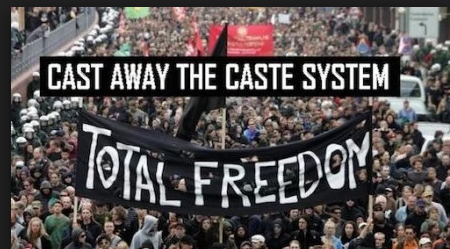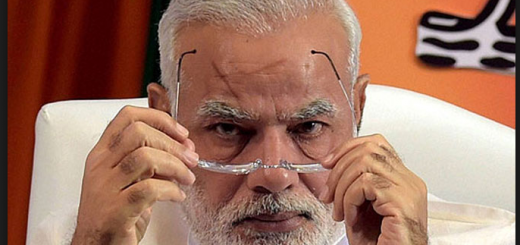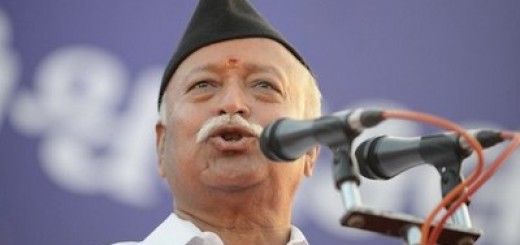Ideal lowly Cattle Class should Replace Lording clerical class

 Oh! India cast out thy shameful caste system
Oh! India cast out thy shameful caste system
dr. james kottoor (Chicago)
“Depth of humility led the Carpenter of Nazareth to get born in a lowly cattle shed. So do not lord over people in your care nor blow up like a peacock.” This is our paraphrasing of Phil.2.5 and 1Peter 5. That understanding, locks us in ‘Cattle Class’ a phrase diametrically opposed to any clerical class, princely class or ruling class.
For all real lovers and followers of Jesus, there is only one option, to be in the company of the ONE born in a cattle shed, to become of the Cattle Class, diametrically opposed to any princely class, clerical class, priestly class, class of eminences, excellencies, class of any over dressed pea-cocking class. Son of Man was with ordinary people – the least, last and lost — and for ordinary people, nay for the poor, needy, downtrodden all through his public life. His followers can't be in any professional profitable domineering class without betraying him.
Equally, it is not for the Cattle Class to seek lime light, but to work in the shadow, behind the curtain, under the depth, like leaven in the dough and transform society from within. People wondered: “Is he not a carpenter's son?” Let people wonder at your words and deeds, not at the glowing dress you put on, the glare and glory of the light and sound you create. Try to be a little, lit candle on the sidelines, in the encircling gloom and darkness!
Curse of Caste, Varna, Untouchability!
Now to the topic: the “accursed caste”, India’s contribution to Humanity. “By any standard, varna, caste and untouchability made Hindu society one of the most oppressive, exploitative and less productive social systems in the world.” This is the writing on the wall we see every where in India and the tragedy is that best of minds starting with Gandiji, the Father of the nations and his ardent followers to this day have not succeeded to wipe it out.
One correction in the above quote is necessary: “untouchability made Hindu society one of the most oppressive” should be changed to “Indian Society”. True, caste system had a Hindu religious origin, but which other religious or cultural segments in India are not affected and infected almost totally, by this cancer that disfigures and kills? Christianity and all proliferating churches, starting with the Catholic Church, is notoriously infected with this malaise, although all of them loudly parrot and proclaim: “We have no caste distinctions among Christians.” That is all very good for Pulpit talks. They are all preaching equality and practicing inequality!
Just recall one instance only, that of the Catholic dalit Bishop of Kadappa, who was kidnapped by his own three priests belonging to high Reddy caste on April 25, 2016, tortured, forced to sign cheques to the tune of lakhs and left desolate on the road after midnight. There is a saying in Malayalam: “It is enough to take one grain of rice to see if the whole pot of rice is well cooked.” Since this incident, or rather crime in the Catholic Church in India took place, more than one year ago, most of the readers may have forgotten the details, although CCV has published dozens of articles on this, casteism and racism in India. So it is good to recall a few articles at least and find out if we have learned anything at all, more than that, if we have done anything concrete to correct things for the better, to move ahead, less burdened with guilt.
Indian Express Article below
This is a must in the context of the very educative article on “The Curse of Caste” by a well-infomed writer P Chidambaram in the Indian Express. (Please read it below and keep it for future reference.) For the nation as whole and particularly for all Christians, especially for the Catholic Church which is a combination of three Rites, Latin, Syromalabar and Syromalankara, this is the last chance to reform itself, to come out free from the accursed stains of Caste and race. This time they have to either perform or perish. The burden for reform is placed squarely at the door of the clerical class, especially the Hierarchy, which has been looting the CATTLE CLASS, the laity, who make up the vast majority, 99 per cent in the Church and treating them like errant boys or decorative candle bearers like acolytes, nay worse than untouchables in India’s Caste system.
Procrastination is the thief of time. No more lending ears to the pleas like: “Tomorrow, tomorrow, after my time.” The thinking sections of the laity are fed up and have given up talking to the hierarchy who never responds to any legitimate queries. This happens even when there is a Pope pleading for perfect equality (Call me ‘tu’, apostles called Jesus so, he tells, a youngster on the phone), urging laity to take leadership roles because, it is the hour of the laity, and asking, nay ordering the clergy to keep their mouth shut to listen and learn from those who sweat and toil in the rough and tumble of the world and not to trot about parading, “I am the boss”.
The question we are discussing here is how to wipe out every trace of Caste mentality, first from the leadership of the church, second from among various sections of the laity. It is strange that two largest democracies, India and America are infected with closely aligned destructive plagues: Racism and White supremacy in US and Casteism and racism in India. Finally, the church leadership in US after the Charlottesville, Virginia fiasco and explosion has acknowledged publically that Racism is the nation’s original sin and it must be fought on a war footing. For that in US they have set up an Episcopal committee to draft a new soul searching and unsettling pastoral with action programmes to follow.
Indian Dilemma
Here in India the big problem or dilema is that the hierarchical church has not recognised yet that it is mortally infected with both casteism and racism. There can be healing only for those who admit to be sick and are ready to undergo treatment. Ninety percent of Indian bishops loudly proclaim they are not in the least infected with caste virus, even when they are dying because of this deadly virus. We shall prove to hilt they are with hundred stories, connected with Kadappa bishop kidnap in a week or so. This is only the first opening shot of WAR ON CASTE, in Catholic church.
Zero Performance at Family Synods
Just think of the so called ‘enlighted’ purple tops who attended the two family Synods in 2014 and 15. CCV wrote several articles and sent to them that they should honestly admit in the Synod that Caste system is one of the killer diseases of families in India, also endogamy in Kottayam diocese protected and promoated by the Syromalabar church. But none of the Indian bishops had the minimum honesty, humility and courage to admit at the Synod. What then will you do with the three Rite-centred Episcopal conferences in India? They are all sold on exapanding the geographical boundaries of their temporal kingdom by getting new dioceses and new bishops by hook or crook. Their main agenda is religious colonialization. A few more new dioceses in America, Australia and Europe will be source of more foreign FDI flow. The clue is, none of them are interested to send their overproduction of missionaries to Africa and poor countries. Why?
No living Church in Inda?
As long as there is no zero tolerance of caste system and racism and dialogue — vertical and horizontal — there is no living church in India, only a dead one which should be buried before it starts stinking. In the meantime those interested to follow Jesus are joining the fraternities called the Cattle Class and sharing a common humane life through Almaya Sabdam blog, CCV and Bombay laity where they have all the freedom to share views and work together. On Aug.25 there was also a telephone conference in US organised by well known lay leaders like A.C. George, Chackochan Kalarikal, Jose Padanamackal, Jose Kallidukil etc., in which some 50 people participated to lay the foundation for lay organisation independent of the clergy who are the most undependable section now in the Catholic Church. May be, the old pyramidal structures of the Hierarchical church may be going to die a natural death.
Will anyone believe that CCV published over 20 articles on casteism and Kadappa bishop’s kidnap and send them to all bishops. But none of the bishops ever responded proving their complicity in the practice of caste system. We shall be publishing the whole list of them for those who wish to read them from the archives of the CCV and a few important ones for quick recollection.
Bring out Pastoral on Castism
Whether with or without the hierarchical church, the followers of Jesus called the Cattle Class will continue its onward resolute march without let or hindrance. If the hierarchical church in India wish to survive the attack of caste cancer they may take a queue from the US bishops and set up a special bishops’ commission to study and bring out a pastoral on clear instances of castism among bishops and laity and take whatever surgical operations are needed to rescue the church in India from succumbing to an untimely death without mourners. Until that time let us live in hope praying that the feared death may be avoided. james kottoor, editor, ccv.
Please read below Curse of Caste by P. Chidambaram
The curse of caste – Across the aisle-India at 70
P Chidambaram in the Indian Express, August 27, 2017
How and why the caste system has survived through the centuries is a puzzle. Why did the Kshatriyas and Vaishyas, who had power and money, accept the Brahmin as their superior? Why was the guru invariably a Brahmin?

One of the lessons that I have learned over the years is that a sense of caste superiority (or being casteist) can sit well with many virtues without the virtuous person feeling guilty or ashamed about it. Among the caste conscious were — and are — academics, writers, professionals and political leaders.
For example, few could match C Rajagopalachari (“Rajaji”) in terms of scholarship, intellect and selfless service. He was a natural choice as Chief Minister of Madras, as the state was then called. He was a great administrator, yet he stumbled on an issue that had a direct connection to caste. He advocated ‘vocational training’ as part of the school curriculum but, instead of leaving the choice of skill/trade to the student based upon his aptitude, Rajaji pushed for the student to follow the trade or occupation of his father. Rajaji’s scheme was quickly dubbed kula kalvi or caste-based education, the ruling Congress party revolted, and he was forced to resign. (Rajaji had erred, but I do not believe he was casteist.)
Unbreachable Divisions
The origins of the Indian caste system lie in varna. Varna is the four-fold division among Hindus — Brahmin, Kshatriya, Vaishya and Sudra. The lines that divided them were horizontal, hierarchical and unbreachable: once you were born in a Brahmin or Kshatriya or Vaishya or Sudra family, you will remain there for your life and your progeny will remain there for the duration of their lives. Nothing could be more offensive to an individual’s self-worth and dignity. Buddhism and Jainism were born out of a revolt against the unbreachable divisions in the Hindu religion.
If varna was bad, jati or caste made the system worse. Within each varna there were divisions and sub-divisions and each one of them came to represent a caste (jati) or a sub-caste. Each caste or sub-caste became a closed shop; it framed its own tyrannical rules; and violations were punished by exclusion or expulsion.
The worst form of caste oppression was untouchability. An ‘untouchable’ — now called a Dalit — was totally excluded from Hindu society. He was not only lower than the Sudra, the lowest in the varna hierarchy, he was actually outside Hindu society. His role was to serve those who belonged to the varna hierarchy, to fill lower-order occupations like cobbler and undertaker, and to do the ‘unclean’ jobs such as scavenging and skinning carcasses. Of course, the Dalits were also a source of cheap farm labour for the other castes.
Revolt and Support
By any standard, varna, caste and untouchability made Hindu society one of the most oppressive, exploitative and less productive social systems in the world. Note the words ‘less productive’: if millions were denied access to education, fair wages, right to property, social mobility and political representation, how could that society achieve its full economic potential?
Some of these issues were brought to the fore during the freedom struggle. Babasaheb Ambedkar emerged as the authentic voice of the Dalits. E V Ramasamy (“Periyar”) took up the cause of the non-Brahmin castes: in Tamil Nadu the non-Brahmins constituted nearly 97 per cent of the Hindu population! Sri Narayana Guru worked to liberate and unite the so-called lower castes, especially the Ezhava.
The goal of freedom absorbed the nation’s attention, social reform remained in the background. The leaders were true patriots, willing to sacrifice everything, including their lives, in the cause of freedom. Their sole weakness, it appears in retrospect, was allegiance to caste. Christophe Jaffrelot, in an illuminating article (The Indian Express, August 4, 2017), has quoted from the speeches ofMahatma Gandhi, Madan Mohan Malaviya, K M Munshi, Rajaji and Dayanand Saraswati in the 1920s and 1930s and argued that they had legitimised the varna hierarchy, that was “imbued with anti-individualistic values”. Jaffrelot has also quoted from Deendayal Upadhyaya’s writings in 1965 and from a contemporary speech of Mr Yogi Adityanath.
The views of some leaders evolved and changed over time, in the cases of some other leaders the views seem to have become more regressive. Gandhiji said “I do not believe in caste in the modern sense. It is an excrescence and a handicap on progress.” On the other side, Mr Yogi Adityanath is quoted to have said “Castes play the same role in Hindu society that furrows play in farms, and help in keeping it organised and orderly.”
Centuries-old Puzzle
How and why the caste system has survived through the centuries is a puzzle. Why did the Kshatriyas and Vaishyas, who had power and money, accept the Brahmin as their superior? Why was the guru invariably a Brahmin? Is it because humans crave an associational life, that caste became a convenient association that gave a measure of physical and social security? Thanks to education and urbanisation, caste may be eroding at the edges of Hindu society, but caste still sits at the core of Hindu society.
Notwithstanding the Constitution of India or Articles 14, 15, 16, 17 and 21, caste and casteism survive to this day. Caste is the most dominant factor in politics, social relations and marriage. Caste has significant influence, in varying degrees, in government administration, private sector, trade and professions. There are deep caste divisions in the world of art, culture and literature.
In my view, caste is a curse that diminishes the potential of India and the Indian people. The annihilation of caste is nowhere in sight.
Additional information from Indian Express
Caste system in ancient India not rigid: Author Amish Tripathi
“In my books, I actually speak about the caste system. If you see the genetic research that is coming out, it’s very clear the caste system was not based on birth,” says author Amish Tripathi.
As India battles the widespread anger following a Dalit research scholar’s suicide, best-selling author Amish Tripathi is trying to drive home the message that in ancient India, the caste system was not rigid and attributed to one’s birth. Rohith Vemula’s death on January 17 in Hyderabad University after being suspended for allegedly assaulting an ABVP leader has resulted in mass protests across India.
Tripathi — who deftly weaves in threads on women’s empowerment and the caste system in his interpretations of Indian mythologies — prefers to reserve his judgement on the Hyderabad University issue since it’s under investigation.
“As far as specific incidents are concerned, learning from the Delhi church attacks and Ranaghat nun rape case (in West Bengal), it turned out the incidents were not how they were portrayed. So, we should stay calm and wait for investigation to conclude.
But he concedes that oppression continues despite the progress the country has made in the last almost 70 years since independence. “At a broader level, there is no doubt oppression does take place. We have made improvements in the last 70 years but there is still a long way to go,” said Tripathi — who burst on to the scene in 2010 with the popular Shiva trilogy.
“In my books, I actually speak about the caste system. If you see the genetic research that is coming out, it’s very clear the caste system was not based on birth. In ancient times it was not rigid,” the 41 year-old IIM-Calcutta alumnus contended.
As examples, he says Maharishi Valmiki — who wrote the Valmiki Ramayana — was not born a Brahmin. “The Maharishi who composed the Mahabharata, who compiled the Vedas, was not born a Brahmin — he was born to a fisher-woman. He became a Brahmin…not just a Brahmin…he became a rishi (sage),” Tripathi underlined.
Dictum & Diaspora: Kumari Selja isn’t India’s enemy; the abhorrent caste system is
Written by Ujjal Dosanjh | Published:December 8, 2015
One must admit that the successive Congress and the BJP regimes have done little to fight the caste system.
The other day in Parliament, Kumari Selja accused a Gujarat Dwarka mandir of asking her to reveal her caste during a visit in February 2013.
At the time she was a Union Minister in the UPA government. Instead of declaring it offensive and un-Indian if true, the BJP ridiculed her claim as one simply made to “grab Rahul’s [Gandhi] attention.”
Unfortunately, the Indian diaspora has carried the caste in all its ugliness with us to where ever we have settled. Many of us continue to be more or less but definitely afflicted by its sinister impact upon people’s lives. Those at the ‘lower’ end of this horrible hierarchy continue to suffer prejudice and discrimination at the hands of other Indians while all of us contend with the usual trials and tribulations and sometimes racism in our adopted lands. The caste divisions among us waste energy that could otherwise be used in better integrating into our societies.
The close to seven decades of self rule and legal extinguishment of caste in India hasn’t rendered it even remotely irrelevant. It hasn’t withered away. One must admit that the successive Congress and the BJP regimes have done little to fight the caste system. On the contrary, they have fuelled the fires of identity politics resulting in high levels of caste consciousness stunting the growth of social equality and solidarity. That consciousness can be a positive force if used to erase prejudice and discrimination and engender equality, inclusion and fairness. But that is not how it has often been used. It has been abused by vested partisan interests to create an increasingly divided polity where common good plays second fiddle to political advantage.
Anil Severin
 Thanks for this beautiful thought provoking article.
Thanks for this beautiful thought provoking article.
Regards.Anil




















Anil Severin wrote: Thanks for this beautiful thought provoking article.
Regards.Anil